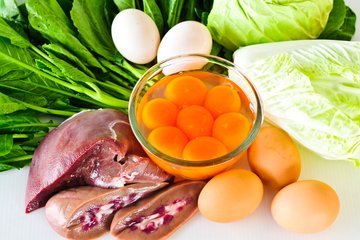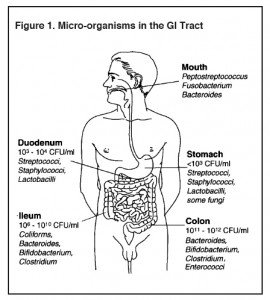Monthly Archives: September 2015
What Vitamins Should I Take: The Top 3
Have you ever walked through the health food store or the supplement section of the grocery store and thought,”What vitamins should I take?” Most of us have done this at some point. Often spurred by something we saw or read somewhere, most people are interested in vitamins with hopes of helping alleviate an ailment or preventing one. Ironically, when trying to select a vitamin, most are often drawn to attractive wording designed more for catching the buyers eye than actually providing a solution or step towards prevention. There are so many choices, where does one actually start.
Better yet, how do you know that the supplement that you are taking is actually right for you? This is a big question and one that is often overlooked. There are some supplements that most of the population are going to be okay with taking. However, there are several supplements that should only be taken if you have a way of confirming that you actually need them. This is best accomplished through lab testing. So rather than you wondering through the supplement aisles wondering “what vitamins should I take” or having to take the advice of a sales person more interested in promoting their commission than promoting your health, let’s talk about the ones that are in general good for most people and will not cause harm.
What Vitamins Should I Take: Number One
The supplement that almost everyone should be on is vitamin D. Remember that a supplement is meant to be just that. It is not a replacement for good dietary choices. I often tell my patients when emphasizing the importance of diet that regardless of how great of a nutrient repletion protocol I design for them, it is all for nothing if they do not follow through with a good diet. But with that said, a good diet often does not provide enough vitamin D. Vitamin D has many important functions that support the cardiovascular, immune and hormonal systems. It does come in some foods, but not in quantities sufficient enough to meet the demands of nearly all of the population. This is becoming more recognized as even maintenance recommendations have increased from 400 IU per day to now as high as 10,000 IU. The consistency of the number of physicians checking vitamin D and diagnosing it as low suggest that we are facing a vitamin D deficiency epidemic. And according to the Vitamin D Council, when you are not getting enough vitamin D from natural sunlight, supplementation is the best support.
The Second Most Important Supplement to Take
Not actually a vitamin, but to less important in terms of the way that your body functions and nearly as deficient within the majority of the population, omega 3’s should be a staple for most people. Omega 3’s are just as important as any vitamin since they are essential for us to obtain through the diet or supplementation. We don’t make them. Omega 3’s, like vitamin D, has links to multiple systems in the body. There is not hardly a condition that does not benefit from omega 3’s, often called fish oils. For the person with good eating habits, omega 3 needs can often be meet with the diet. Yet, most individuals consume a diet that is high in the omega 6’s which can be disease promoting. Therefore, when the diet alone is not getting the job done, you have to make up the difference with supplementation. Unfortunately, even the right food choices may leave you imbalanced on your omega 3’s since many foods are not raised and harvested the way they used to be. So when asking what vitamin should I take, omega 3’s should be the number 2 option on your list (even though they are not actually a vitamin).
This B Vitamin Might Surprise You that It Made the List
Over the years of testing patient’s nutrient status, one nutrient has been shown to be deficient more than any other. What is surprising is that this nutrient is rarely talked about. It is not considered a quick fix for giving energy or improving memory, but it indeed does both. It also improves hormones. In fact, it is this last point related to hormones that is the reasons so many are deficient in this nutrient. Just ask,”Am I under stress?” The answer is YES! You are under stress. And stress increases the demand for hormones. As a result, we use up one nutrient more than any other to help manage the stress. That nutrient is B5. When you have the vitamin B5 to help you manage stress better, your energy is better, you age slower and you think better. Not only that men have better testosterone and women have better balance of their hormones to continue to have that wonderful female glow. Therefore, if you are asking what vitamin should I take, B5 is top of the list. Even after years of seeing tests and working towards custom approaches for patients, when I personally ask what vitamins should I take, you will not catch me without B5.
Get Rid of Stomach Pain after Eating Once and for All
No doubt we have all had stomach pain after eating at some point in our lives. However, if you are one of the unfortunate ones that deals with stomach pain after eating routinely, you are ready for relief. The impending feeling that your stomach is going to start hurting soon after eating creates worry and distress. The sense that as soon as you consume a morsel of food, all those annoying sensations start returning again. And to add insult to your discomfort, your doctor examines you and follows up with, “Nothing is wrong. Try this antacid.” You know something is wrong. Stomach pain has not been present all of your life, so something has changed.
There are many causes for stomach pain, many of which are named diseases. Ulcers, gall stones, and reactions to foods such as gluten and lactose in dairy top the list. While these can be causes of stomach pain after eating, there is another reason you want to consider first.
The Most Prevalent Reason You Have Stomach Pain After Eating
Ingestion of food should not be followed by bloating and pain. However if you are dealing with stomach pain after eating, especially if there is bloating, constipation or diarrhea, an overgrowth of bacteria in your small intestine should be your first consideration. This is conveniently named, SIBO, meaning Small Intestinal Bacterial Overgrowth. Most of us think negatively when it comes to bacteria, however, this is not a situation where you have too much “bad” bacteria. Rather, a SIBO infection is too much of the bacteria that we should have. The problem is that they are located in the wrong area. They should be further along in the gastrointestinal tract in the large intestine. Dr. Allison Siebecker, ND of www.siboinfo.com, accurately states the problem by saying,“The infection is of bacteria that normally live in the gastrointestinal tract but have abnormally overgrown in a location not meant for so many bacteria.“
The presence of the wrong types of bacteria can lead to several imbalances that change the way we digest food. As a result of the intestinal environment being out of balance, symptoms manifest and ultimately pain can manifest.
Follow these Steps to Stop the Pain
Stomach pain after eating is annoying and takes the pleasure out of eating. If you been feeling hopeless about getting your gut back under control and being able to eat normally again, don’t give up. Here is the plan that I have refined and use with my patients.
Step 1: Go Paleo
The standard American Diet is contaminated with items that are often difficult to even call food. The ingredient labels often mimic more of a science experiment list than what one should be eating. Therefore, the first thing that I have my patients do is clean up their diet. If you want stomach pain after eating to end, you have to change what you are eating. Of course the stomach hurts. It is attempting to digest “foods” that are at the same time poisoning it. You cannot eat the same things and expect your stomach to react differently. Your best bet at getting away from the numerous problems with the standard American Diet is to follow the Paleo diet. This ancestral approach on modern eating eliminates many of the problems with today’s food.
Step 2: Remove the FODMAPs
Not all healthy food is good for you, well at least sometimes. What I mean is when your stomach and small intestines are dysfunctional with too much bacteria, even foods that are otherwise good for you can cause symptoms. For example, foods such as onion, garlic, avocados or cherries, cause stomach pain after eating them. But aren’t these simply fruits and vegetables? They are, and most of the time they would be highly recommended as part of a healthy diet. However, when too much bacteria exists in the small intestines, you have to avoid these foods. If these foods are not avoided, the bacteria ferment them and cause symptoms. Once the bacterial overgrowth is alleviated, many are able to reintroduce the FODMAP category of foods with little problem. Stanford University Medical Center offers a list of FODMAPs.
Step 3: Treat the SIBO
Once unheard of, probiotics are now a common word. They are promoted on television and in health food stores just as much as vitamins. Yet, these beneficial bacteria are not such a good thing when they populate the wrong area of the gut. In the case of small intestinal bacterial overgrowth, or SIBO, bacteria begins to take over the small intestine. This is not normal. Most of the bacteria of the colon should be in the large intestine. As a result of the overgrowth and wrong types of bacteria being located where they should not be, the digestion of food is affected. The process of fermentation and gas formation takes place as can fat malabsorption, all of which can lead to stomach pain after eating.
The key to managing SIBO is reducing the bacteria. Several options are available, including antibiotics, both natural and pharmaceutical. The best pharmaceutical choice is Rifaximin. Natural options include oil of oregano and garlic extracts. However, ending SIBO permanently is dependent on replacing what is missing.
Step 4: Replace What’s Missing
If you don’t replace what’s missing, you have little hope of avoiding SIBO and ending stomach pain after eating for good. So what exactly is missing you might ask. There are 2 things that when absent increase the risk of SIBO. The absence of these 2 digestive components also even increase the risk for non-SIBO stomach pain after eating. They are acid in your stomach and bile from the liver and gall bladder. These are first line defenses that we have to reduce bacteria and other organisms from entering our body. With the reduction of bacteria, the overgrowth of SIBO does not take place. However, when you have low acid and bile production, you are not going to immediately start making it again. Therefore, taking a digestive enzyme that includes both of these is necessary. It also helps re-establish your first line defense system and prevent the return of SIBO.



